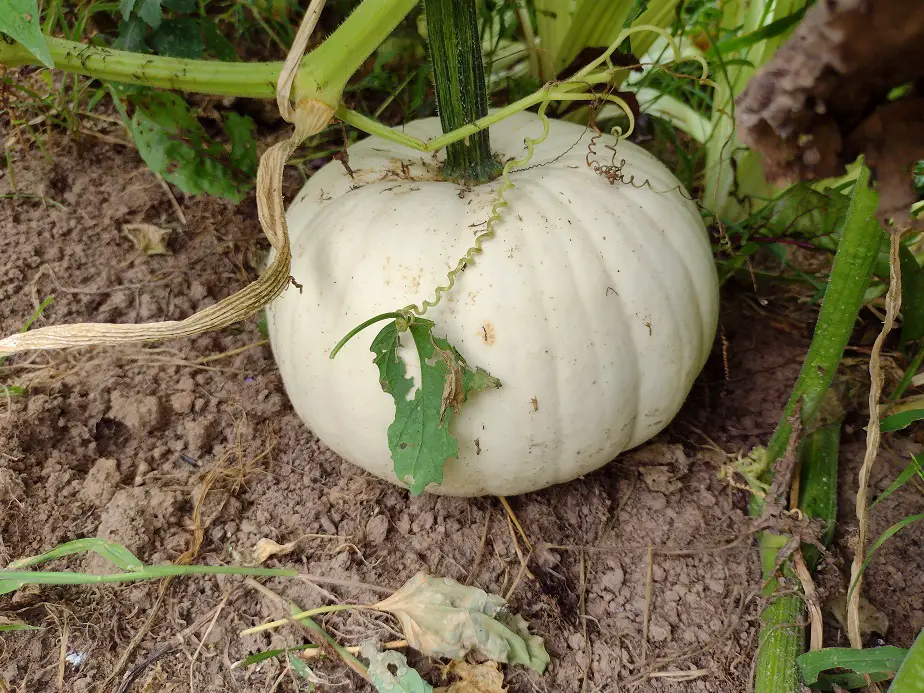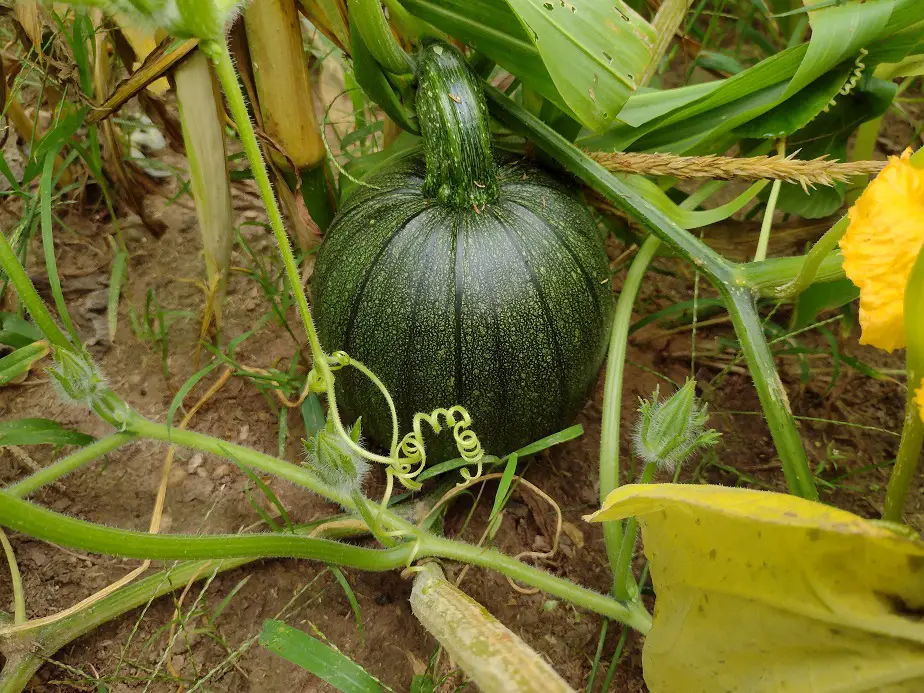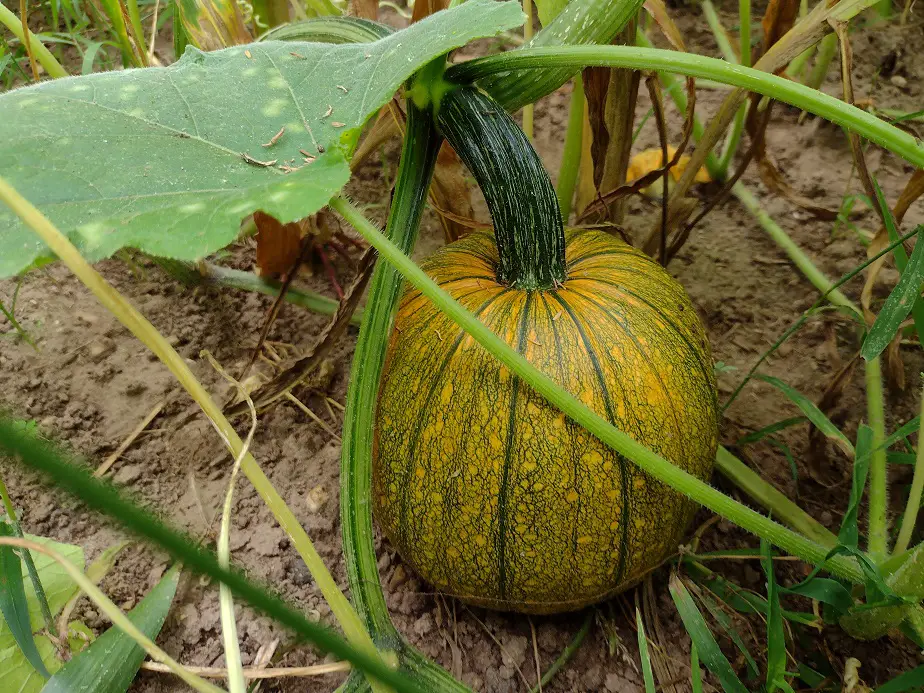Pumpkins are a very common small-scale crop and growing them isn’t too hard.
Pumpkins are usually fertilized at a rate of about 100 pounds of nitrogen, 100 pounds of phosphorus, and 100 pounds of potassium per acre. Pumpkins are especially sensitive to high nitrogen in the soil so nitrogen applications are usually kept somewhat low. Fertilizer may be applied in 1-3 applications.
Let’s go over the fertilizing basics, and general tips for pumpkins.

When and How to Fertilize Pumpkins
Most skilled growers fertilize pumpkins 2 or 3 times in a season. The goals in adequately fertilizing is to provide needed minerals, and keep input of costs and time to a minimum. Trouble is, you can’t have all three. These three aspects make up a triangle of field production.
Applying all the fertilizer at once saves a lot of time, but you will have a lot more waste and will probably struggle with a lesser fertile soil through the summer when fruits are bulking. You could offset that a bit by applying extra fertilizer, but that gets expensive, and you can only add so much without hurting the soil or your plants.

If you limit waste, keeping costs down, you will use up more time and may struggle with infertility. If you really want the soil to be super fertile, it either takes more applications which means more time, or heavier applications which means more waste.
I recommend fertilizing twice. The first application, done at or just before planting time, should provide all the needed nitrogen and phosphorus, and half the potassium. The second fertilization should provide the remaining potassium, and should be 3 weeks after planting.
That’s a good balance between time, money, and fertility. put the nitrogen in first, because it’s needed immediately and you don’t want it hanging around too long. Put the phosphorus in immediately because it’s not going anywhere but in the plant.
Spread the potassium application out because plants need it all year long and it’s prone to leaching away. A lot of potassium can be lost in spring rain. The same can be said of nitrogen, except that it’s not needed as long.
Too much nitrogen is a common culprit of low yields. It will cause the growth spurt stage of the plant to be extended and that cuts into the flower production stage. Later flowers mean a shorter fruit bulking season. The result is smaller and fewer fruits.
I think it’s wise to try and plan on most of the nitrogen being used up at the halfway point in the growing season. At that point, it will encourage the plant to flower more profusely which gives almost 2 months for the fruiting and bulking stage, assuming a 100ish-day variety

Pumpkins use up about an ounce per plant of each; nitrogen, phosphorus, and potassium. In smaller plots or gardens, that’s simplest done with a few bags of 10-10-10 fertilizer at a rate of about 9 or 9-1/2 ounces of granular per plant. In that case, I’d fertilize half at planting and half in 3 weeks.
Now, if you have good soil, I don’t use that term lightly, then you can get away with a single fertilization. Nice, rich, black soil (organic content at least 5 percent) will hold on to that fertility well enough to allow complete fertilization in the beginning.
The biggest limiting factor for pumpkins is water. Next to that, it’s a toss-up between nitrogen and potassium. Nitrogen in the growth spurt stage and potassium in the flowering and fruiting stage. Potassium is needed in equal amounts. But it’s way more stable in the soil so it’s a lesser concern.
Related Articles:

